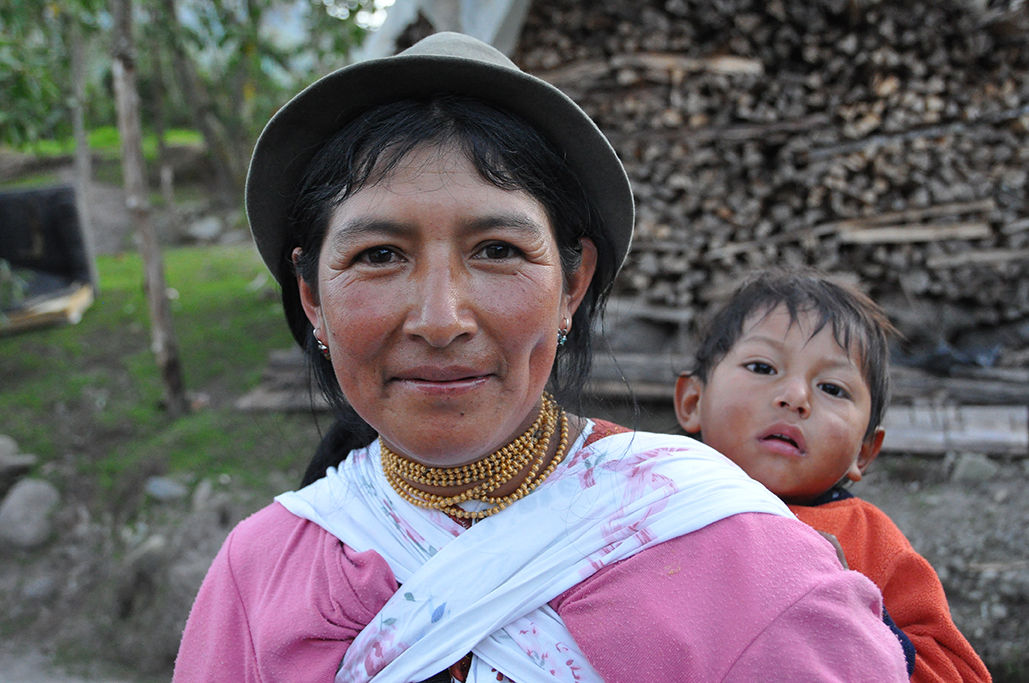
Imagine that you are a woman living on a farm on the outskirts of a small, rural town in Bolivia. You wake before the sun rises to tend to the animals, cook buñuelos, feed your children and send the older ones off to school. You then spend the early morning managing the farm and the house – planting, tilling, washing, and cleaning, all by hand and often with your young one strapped to your back. You then make the two-hour journey, on foot and public transportation, into town to purchase supplies, in small amounts because that’s all you can carry and all you can afford. These supplies are for your modest business – selling buñuelos at the bus stop outside of town. You set up shop in the afternoon to sell the buñuelos you made that morning. You return home after sundown to prepare dinner over a wood stove, help your children with homework and get them to bed under the dim light of a kerosene lamp.
As a mother of two, I am familiar with the demands of juggling work, home, and childrearing; however I am reminded daily of just how privileged I am. Through my work at Global Partnerships (GP) I have seen first hand the way that poverty places exponential demands on women. I have listened to women in Latin America and sub-Saharan Africa share how lack of technology, transportation, or sanitary conditions extend tasks like gathering cooking fuel, accessing safe drinking water, preparing meals, or caring for children.
Despite these challenges, the women I have met are resilient, proud, and resourceful. They find innovative ways to access information, manage resources, generate income and build networks. To build a brighter future for themselves and their children. As impact-first investors we seek to understand why markets fail to efficiently serve those living in poverty – especially women.
Unfortunately, traditional economic models often fail to a) recognize the gender-differentiated nature of poverty and b) take into account how women make decisions and allocate resources. For over 23 years GP has been investing in women-centered finance, education, and health services delivered through the microfinance platform. During this time, we have invested roughly $144 million in 57 women-centered microfinance institutions (MFIs) across 15 countries, impacting over 3.7 million lives.
Beyond learning what it takes to achieve sustainability and scale access for women, we have learned that we must move beyond traditional economic models to create value for women living in poverty.
The organizations GP invests in understand market failures from the perspectives of the women they serve. For example, there are numerous barriers for women to access a loan or a savings account. Not only do many women not have the collateral needed to secure a loan, the loan process itself poses challenges. Whether it be lack of information about her options, transportation to get to the bank, the time it would take to get there, the treatment she receives when she arrives, or the complicated documentation process – there are a host of reasons why, even when there is “access”, women remain disproportionately excluded.
Microfinance’s success in reaching women came not only in the design of the product, but also in the delivery mechanism. The village bank innovation – lending to women in groups with a solidarity guarantee, came about through listening to, and watching, how women come together to mobilize resources. Early microfinance institutions leveraged the centuries old practices of savings and credit groups to deliver additional resources to women.
The key to their success? They started by going out to communities, rather than expecting women to come to them. They built trust-based relationships through loan officers who visited groups regularly. They relied on the social fabric of the group to underwrite and guarantee each other’s loans. Over time, client-centric MFIs started to identify additional needs and figured out ways to deliver more value through financial education, business training, and health services, all through the village bank model.
At GP, we have seen how our partners honor and value the voices of their clients. These MFIs continually solicit client feedback and adapt their service offering to better meet the needs of the women they serve. The best in class partners in our women-centered portfolio also know the important role of the loan officer. They recruit loan officers with not only financial knowledge, but also strong social and cultural skills – often hiring female officers from the communities they serve.
When it comes to serving women it is not just about what you deliver; it is about how you deliver it. It is about rooting your offering in the needs of women and designing solutions that address the unique nature of the challenges they face.
These learnings have been critical in identifying best in class partners in our Women-Centered Finance with Education and Health Initiatives. They also help inform our thinking as we expand into new product categories, like improved cookstoves, solar lights and home improvement finance – all of which have the potential to deliver benefits for women living in poverty.
